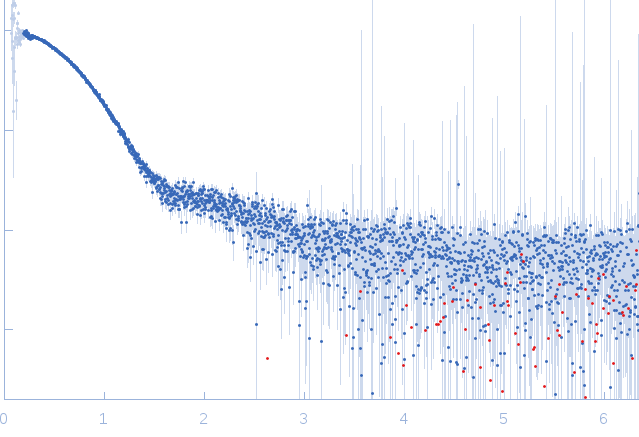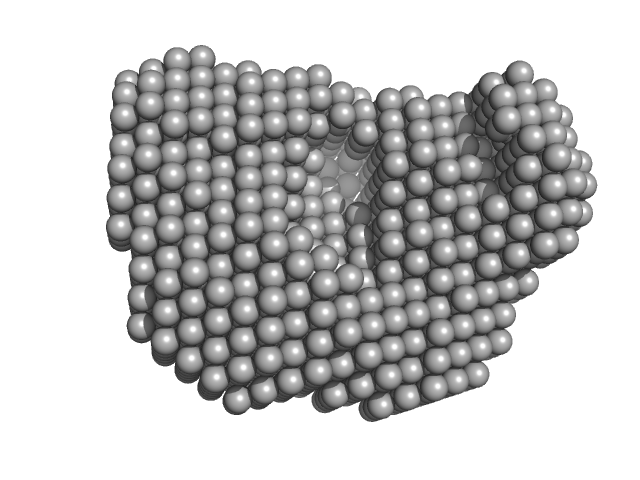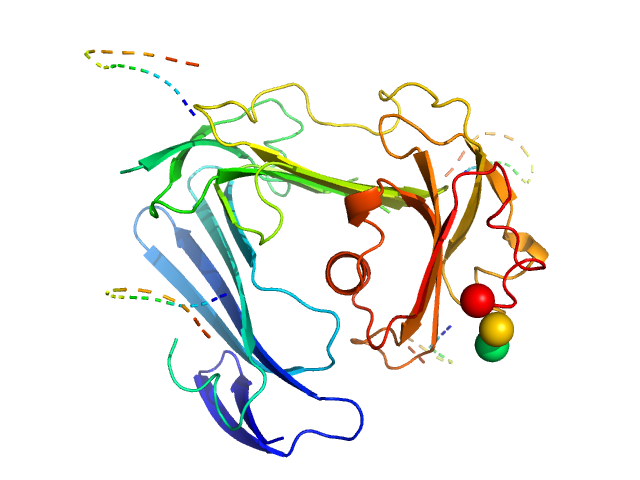| MWI(0) | 34 | kDa |
| MWexpected | 37 | kDa |
| VPorod | 57 | nm3 |
|
log I(s)
3.67×101
3.67×100
3.67×10-1
3.67×10-2
|
 s, nm-1
s, nm-1
|
|
|
|

|
|

|
|
Synchrotron SAXS
data from solutions of
uPAR H47C/N259C
in
25 mM Sodium Phosphate 5 % Glycerol 50 mM NaSO4, pH 7.2
were collected
on the
EMBL X33 beam line
at the DORIS III, DESY storage ring
(Hamburg, Germany)
using a Pilatus 1M-W detector
at a sample-detector distance of 2.7 m and
at a wavelength of λ = 0.15 nm
(I(s) vs s, where s = 4πsinθ/λ, and 2θ is the scattering angle).
Solute concentrations ranging between 1.5 and 4.4 mg/ml were measured
at 10°C.
Four successive
30 second frames were collected.
The data were normalized to the intensity of the transmitted beam and radially averaged; the scattering of the solvent-blank was subtracted.
The low angle data collected at lower concentration were merged with the highest concentration high angle data to yield the final composite scattering curve.
Tags:
X33
|
|
|||||||||||||||||||||||||||